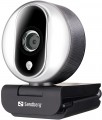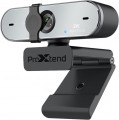Megapixels
The number of megapixels in the matrix that the camera is equipped with, in other words, the native resolution of the matrix. First of all, the maximum photo size directly depends on this indicator: for example, a 1600x1200 frame requires at least 1600 * 1200 = 1,920,000 pixels ≈ 2 MP. With video, the situation is somewhat different, where the actual resolution of the matrix can be noticeably higher than required for the frame.
There is an opinion that the more megapixels, the better the image is obtained. Formally, this is not the case: the resolution of the sensor only affects the detail, and in itself numerous megapixels can even worsen the picture — especially if the matrix is small. However, in fact, high-resolution sensors are often installed in fairly advanced cameras, in which high image quality is achieved through a number of characteristics.
WVGA filming (480p)
The maximum video resolution supported by the camera.
WVGA is the most modest of the widely used formats — it does not belong to high-definition (HD) standards. Webcams of this format usually have a resolution of 640x480 to 1024x768; you should pay attention to them if you need the simplest and most inexpensive solution.
Full HD filming (1080p)
Further, after HD 720p, the development of high definition standards. Provides a standard frame size of 1920x1080; in addition, this category includes webcams that support 1600x1200 video — this resolution does not formally apply to
Full HD (1080p), but is comparable to it in detail. Anyway, cameras of this standard are quite advanced — in particular, they already allow showing documents and other objects with small details in the frame.
Quad HD filming
A kind of intermediate option between Full HD and UltraHD 4K: it noticeably surpasses the first standard in terms of detail, while being cheaper than the second and not so demanding on communication speed. The
Quad HD format does not have a strictly defined resolution, among webcams there are, in particular, 2048x1536 and 2592x1944.
File format
File formats in which the camera can save video footage.
This parameter is for reference only: modern computers are equipped with extensive sets of codecs that allow you to play almost all common formats, and in extreme cases, the missing codec can be installed separately. TVs in this regard have more limited capabilities, however, in webcams designed for them (see "Purpose"), this moment is initially taken into account.
Features
—
Face scanner (FaceID / Windows Hello). A specialized scanner for facial recognition. Note that this is not just about “recognition from a photograph”, but about a full-fledged three-dimensional scanning using a special IR sensor. This allows very accurate and reliable recognition to be achieved. And thanks to advanced algorithms, accuracy is maintained even when facial hair changes, putting on and taking off glasses, and other similar changes. As for the purpose, the face scanner is mainly used for user authentication — in the case of Windows it is Windows Hello, and for iOS devices it is FaceID.
—
Quick capture button. A button similar to the capture button on cameras: when you press it, the webcam takes a picture and saves it to a dedicated folder. Thus, a minimum of effort is required from the user — literally one click on the button is enough to get a digital photo immediately stored on the computer. The quality of such shots is not high and this option is not able to replace a full-fledged digital camera, but it may well come in handy when speed or ease of taking a picture is important.
—
Microphone. The presence of a built-in microphone allows you to use the camera not only to work with video, but also to transmit or record voice and other sounds. This is often more convenient and cheaper than buying and using a separate microphone. And the presen
...ce of noise reduction allows you to make speech more clear by removing extraneous sounds from the air. Webcams with a noise-canceling microphone are primarily needed for professional use when you need a clear transmission of words — for online lessons, video conferences, etc.
— Speaker. The presence of a speakerphone will allow you to communicate with the interlocutor without the use of additional accessories (headphones, speakers). Actual is in models for conferences. However, the sound quality and volume can be mediocre.
— Motion detector. A feature that allows the camera to respond to movement in the frame. Most often used to automatically start recording or broadcasting if a moving object appears in the field of view. However, this function is not very common — it is convenient mainly for surveillance systems, and webcams are rarely used in such systems (it is more convenient to use specialized cameras in them).
— Night shot. The ability to use the camera at night, in low light. The specific implementation and capabilities of this feature may vary. So, some models use a highly sensitive sensor that can work effectively in low light; in other models, IR illumination is installed, invisible to the human eye, but perfectly perceived by the sensor. These nuances should be clarified in each case separately. However, it is also worth noting that webcams are rarely used in twilight or darkness, and even in such situations it is more reasonable to use regular backlighting (see below): it preserves the colours in the image, while shooting at night usually gives a black and white picture. .
— Backlight. Own lighting system built right into the camera — usually in the form of several LEDs. Designed for shooting in low light conditions; at the same time, in contrast to night shooting (see above), in this case, the illumination is carried out in the visible range. This allows you to keep the image in colour.
— Monitor mount. Mount for fixing a webcam on a computer monitor or laptop display. It is this arrangement that is most often optimal: for example, during a video call, it will give the impression that the user is looking at the interlocutor, although in fact his gaze may be directed not at the camera, but at the screen. In addition, the camera installed on the monitor does not take up space on the table, and the risk of accidentally touching it is minimal.
— Tripod mount(1/4" thread). The presence of a 1/4" threaded socket on the camera body. It is this size that is standard for modern tripods and is used in most of these devices. So this feature allows you to mount the camera on a tripod without using adapters and other additional equipment.
— Protective curtain. A movable shutter with which you can cover the webcam lens. Such a device provides additional security, because your PC or laptop can be hacked and watched through the camera. In addition, the shutter protects the optics from various contaminants.Rotation angle
The range of rotation angles in degrees supported by the webcam. In this case, it means turning the camera to the right or left, without tilting back and forth.

